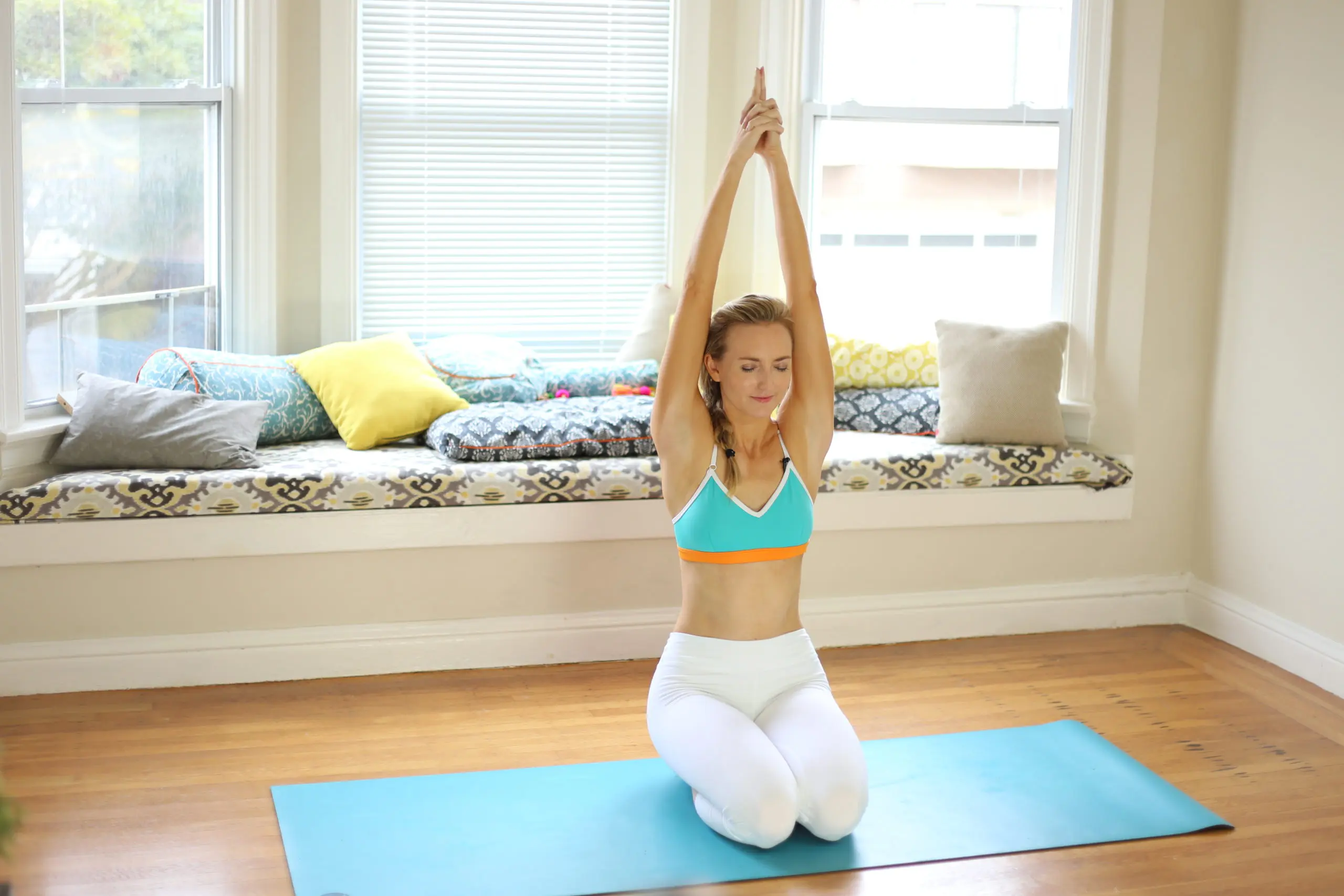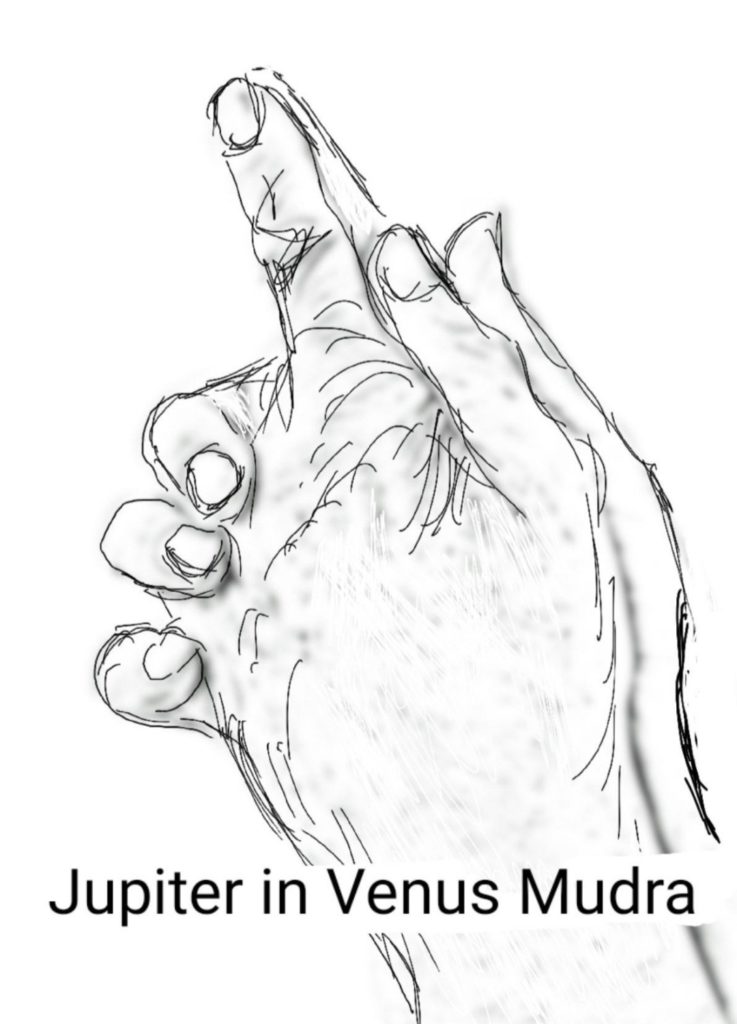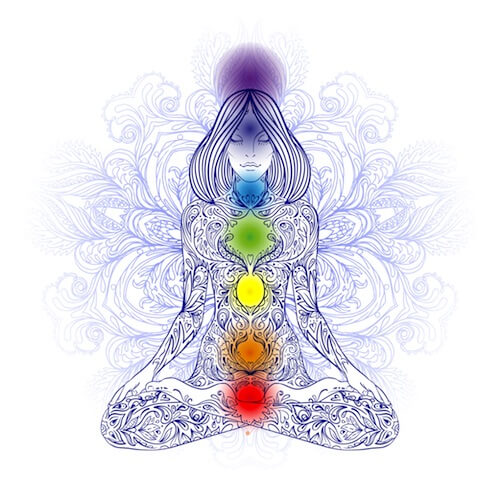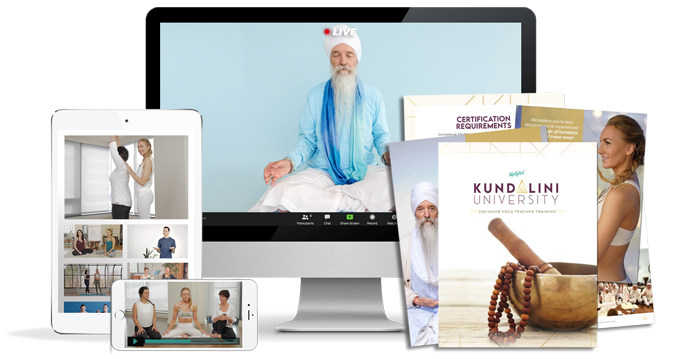
Mudras may be the #1 most under-rated element in a balanced yoga practice. Can you even name one? Ahem. No points for venus mudra 🙄
Mudras are often used like rainbow sprinkles in yoga class; an exciting addition, but definitely not the main attraction. However, when we use mudras effectively in yoga practice, we infuse a deeper level of intention into our practice.
The truth is that energy seals have the ability to channel powerful energy within the body and will benefit yogis of all levels. From mental clarity to sexual liberation, each of these energetically-charged hand gestures is known to release your untapped potential in a specific way. In this article, we’ll take a look at the venus mudra, what it means, how it’s used in Kundalini yoga, and how to practice it.
What Is the Venus Lock?

All mudras were originally referred to as “locks” in yoga, indistinguishable from the bandhas. Today, you’ll hear the term “lock” used interchangeable with “mudra” and “seal”. The venus lock shares the powerful energies of sexuality and liberation associated with the Roman goddess, transcends the laws of polarity like the planet venus. Fun fact: venus spins opposite the rotation of all other planets in our solar system… LOL! The power of love to defy all odds ❤️
Aaaanyway. Venus mudra is used commonly in Kundalini yoga, and its name refers to the soft, fleshy areas at the base of your thumb, otherwise known as the Mount of Venus in tantric tradition. Like the namesake of the mudra, the venus lock is associated with sexual energy, desire, grace and the divine meeting of opposites. Energetically, the Mounts of Venus represent male and female sexuality, and the thumb represents the ego. As you’ll see when we discuss the hand position for this mudra, the venus lock establishes an optimal relationship between these two energies.
There are several variations of this mudra known by other names, including Kali mudra, though it is believed all variations originated in venus mudra. Our expert Guru Singh weighs in on the origins and significance of this mudra below!
Take my quiz to learn if YOUR kundalini energy is awakened 👇
Benefits of Venus Mudra
Mudras help to regulate and re-direct our prana for optimal wellbeing, which is why they’re so popular in Kundalini yoga. These are some of the benefit of practicing the venus lock, specifically:
- Improves levels of mental clarity. The Venus lock is believed to help cleanse the mind of distractions and improve mental clarity.
- Promotes glandular balance. This mudra is an energetic gateway to the pineal and pituitary glands. The pineal gland is responsible for producing melatonin, while the pituitary gland controls growth & reproduction.
- Helps to quiet overactive, noisy minds. Through energy attunement and mindful connection, the Venus mudra can be a helpful practice for the times when you just can’t seem to get your mind to quiet down.
- Gives us a deeper connection to our sexual energy and personal sensuality. If you feel shame or resignation around your personal sexuality or your sacral chakra, this is a powerful practice for you.
- Can help to empower your manifestations or your professional aspirations. Kundalini yogis say this mudra channels productive and powerful energy. This strengthens our ability to manifest our goals.
Venus Mudra in Kundalini Yoga: Sat Kriya

In Kundalini yoga, a variation of the venus lock with both index fingers extended is used to perform sat kriya; a vital cleansing ritual that enables deep relaxation, awakens sexual energy, and strengthens cardiac health. Sat kriya is an active practice that channels your mental and physical energy into a simple chant, repeated for 3 minutes or more. If you find it difficult to sit still in meditation, sat kriya is a great way to channel restless energy.
Are You Chanting Correctly? Refine Your Tune with Me! 👇

Are You Chanting Correctly? Refine Your Tune with Me!

How To Do Venus Mudra
Fun fact: there are actually two versions of the venus lock, traditionally used for men and women. Why? Traditionally, it was thought that men and women have different compositions of masculine and feminine energy (read:hormones), and therefore require different balancing techniques. As we know in our modern age:
- gender is a spectrum, and some people may not feel connected with any gender
- all of us can benefit from embodying both masculine and feminine energy
Instead of providing gendered instructions according to tradition, I’ve provided instructions for masculine and feminine energies. Feminine energy is associated with passive yin and ida nadi, while masculine energy is associated with active yang and the pinagala nadi. For more on Kundalini energetics and divine energies, DEF check out my guide to the nadis for more!
Guru Singh, my experienced lead co-teacher of Kundalini University, explains the importance of using the traditional name for this mudra beautifully:
“In my teaching, I refer to [venus mudra] as ‘Jupiter extended Venus mudra’ – Venus mudra with just the Jupiter fingers extended. In addition to Kali mudra in traditional languages, it is also referred to as Ksepana mudra. All these traditional names are mystical and enchanting, but I […] use the Jupiter extended Venus mudra name so the students can continue to relate with the Venus advantages [while giving] reference to the power of the Jupiter finger, which brings in its jovian/jovial/joyful advantages.”
Guru Singh
Please use the instructions for whatever energy you wish to embody 🌈 Give them both a try and see what works best for you!
Aaand – if you’re seeking to balance your sexual energy, Guru Singh suggests this gender neutral variation with thumbs resting side-by-side:

The most important part of any mudra practice is simply to approach it with intention, and this is why I recommend pairing this mudra with meditation if you’re practicing it for the first time. Here’s how:

Step 1: Begin with intention
Bring yourself to a comfortable, seated position and take a few deep breaths to settle into your body. You can close your eyes if you like, or leave them open. Let your mind quiet down and take a few deep breaths.
Step 2: Find the right finger position
This mudra is done by interlacing the four central fingers and leaving the thumbs out.
Feminine: interlace your hands so that your right little finger is free, and your left thumb is resting on top of your right. Press the thumb of your right hand firmly into the fleshy area where your left thumb meets your left forefinger – this is the Mount of Venus.
Masculine: interlace your hands so your left little finger is free, and your right thumb is resting on top of your left. Press the thumb of your left hand firmly into the fleshy area where your right thumb meets up with your right index finger – this is the Mount of Venus.
Step 3: Attune your energy
Once you’ve found your hand position, rest your interlaced hands in your lap. Tap into the energy that’s present currently in your body. If you’d like, this would be a great time for a brief meditation. Allow yourself to concentrate with ease. You can stay here for as little as 10 breaths or as long as half an hour. When you’re ready to release, do so with as much intention as you started with.
Next Steps
- Love Kundalini? Refine your tune in (the Adi Mantra) with me in this free chanting masterclass.
- Experience my Kundalini Dance Party and elevate your mood in 8 minutes.
- Enroll in my Kundalini Demystified training course. Let’s demystify the “mystery” of this ancient science and INSTANTLY reap the benefits!
Get 3 Free Training Vidoes from our Kundalini University Experience & Certification Program

YOU MIGHT ALSO LIKE
- 8 Kundalini mudras for health and energy
- Vitarka Mudra: What It Is and How Do You Use It?
- Shakti Mudra: What It Is and How Do You Do It?
- Garuda Mudra: What It Is and How Do You Use It?
- Kali Mudra: What It Is and How Do You Do It?
- Shunya Mudra: What It Is and How Do You Do It?
- Varuna Mudra: What It Is and How Do You Use It?
- Vayu Mudra: What It Is and How Do You Use It?
- Venus Mudra: The Seal of Clarity & Empowerment
- Karana Mudra: What Is It And How Do You Use It?
- Gyan Mudra: What Is It And How Do You Use It?
- Dhyana Mudra: What Is It And How Do You Use It?
- Lotus Mudra: What Is It And How Do You Do It?
- Dharmachakra Mudra: What Is It And How Do You Do It?
- Yoni Mudra: What Is It And How Do You Use It?
- Apana Mudra: What Is It And How Do You Use It?
- 10 Powerful Types of Mudras (With Pictures)
Get 3 Free Training Vidoes from our Kundalini University Experience & Certification Program









